#Erika Rosenbaum
Explore tagged Tumblr posts
Text
(You're Not Alone [feat. Erika de Casier & August Rosenbaum] by Courtesy)
A sensitively covered track, bringing the lyrics to the fore in a way that not's dissimilar to the original by Olive but due to the original's dance beats pushes the vibe into different territory on par with Everything But The Girl.
Full EP - https://soundcloud.com/courtesy707/sets/fra-eufori and https://kulorco.bandcamp.com/album/courtesy-fra-eufori
6 notes
·
View notes
Text

Courtesy - You’re Not Alone Vocals by Erika de Casier Vocal production by Erika de Casier Keys by August Rosenbaum Produced by Najaaraq Vestbirk Written by Tim Kellett, Robin Taylor-Firth Mixed and mastered by Joel Krozer / Six Bit Deep
20 notes
·
View notes
Text

MOM - Releas Date March 2024
Mom's cast and crew photograph with Philip Kalin-Hajdu, Albert Melamed, Pascal Et Jérémie, Adam Myette O'Brien, Emily Hampshire, François Arnaud, Cat Lemieux, Erika Rosenbaum, Valérie Doucet, Benoit Beaulieu, Maude Pascale Moisant, John Feifer, and many others
0 notes
Text

TW: This post contains sensitive topics (SA) that might be triggering.
Nothing says "Thanksgiving" like sexual violence. On November 24th, I took to the movie theater and watched the newly-released movie She Said. As you can expect, the movie theater was completely empty except for myself and my sister, so I had the opportunity to experience this movie distraction-free.

The movie She Said (2022) is based on the best-selling book She Said: Breaking the Sexual Harassment Story That Helped Ignite a Movement (2019) by Jodi Kantor and Megan Twohey. In just two hours, the movie She Said reveals how the New York Times journalists Kantor and Twohey exposed Harvey Weinstein as a sexual predator.
Cinematically, the movie was beautiful. It was like I was walking with Kantor and Twohey step-by-step on their journey. It was raw and real. The soundtrack for the film added the perfect touch, invoking the right emotions from the viewer at the right time.
Going into the movie, I was worried that the entire movie would focus on Weinstein himself. While, yes, the movie is about Weinstein and his horrific actions, the movie focuses on the survivors. We actually never see Weinstein throughout the entire movie until the very end. Even then, we only see Weinstein from behind for a brief moment. We don't need to talk about Weinstein; rather, we need to support the survivors and say their names.
Kaja Sokola. Caitlin Dulany. Erika Rosenbaum. Larissa Gomes. Louisette Geiss. And so many more. This movie is a testament to their bravery in speaking out against Weinstein and putting a stop to his actions. Our society as a whole tends to blame the victim, not the perpetrator. It takes guts for a survivor to speak out against their perpetrator, especially a man with so much power like Weinstein.
I found She Said to be very inspirational. It's a story of both tragedy and bravery. I am doing my best to take part in standing against sexual violence in America. It's estimated that 81% of women in America have experienced some form of sexual violence. If that statistic doesn't make your skin crawl, I don't know what will. It's time for us to change the culture around sexual violence: blame the perpetrator, not the victim. And we can't bring change without awareness.
0 notes
Text
What’s in a Name – Really, What Is ?
What’s in a Name – Really, What Is ?
Adapted by Michael Mackenzie from its original French version, What’s in a Name started off reminding me of Carnage, the dinner satire, dark comedy by Roman Polanski. Two couples (in this case they are from the same family), meet over dinner and engage in heightened bourgeois banter about ‘real issues’. While the discussion that ensues through the length of the play may seem completely…
View On WordPress
#adaptions#Amada LIsman#andrew shaver#bourgeois#dinner#Erika Rosenbaum#french theatre#Matthew Gagnon#Michael Mackenzie#Montreal#MOroccan#Pat Kiely#Quebec City#roman polanski#SEgal Cenre#What&039;s in a Name
2 notes
·
View notes
Text
Warframe: Voice Headcanon
[These are purely my opinions on whose voice fit who but please do put in your opinions in, I wanna hear more variety on whose voice would fit them!]
Ash: Shen [League Of Legends] by Kieth Silverstein
Atlas: Nasus [League Of Legends] by Erick Todd Dellmus
Banshee: Kalista [League Of Legends] by Misty Lee
Baruuk: Jenos [Paladins] by Christopher Gurrero
Caliban: Zeratul [Heroes of the Storm] by Fred Tatasciore
Chroma: Leoric [Heroes of the Storm] by Joe J. Thomas
Ember: Lina [Dota 2] by Jen Taylor
Equinox: Camille [League of Lgends] by Emily Roya O’Brien Night / Mirana [Dota 2] Gin Hammond Day
Excalibur: Hayden Tenno [Dark Sector] by Michael Rosenbaum
Frost: Zed [League Of Legends] by Donnie Lucas
Gara: Vivian [Paladins] by Fryda Wolff
Garuda: Elise [League Of Legends] by Sidney Ranin-Smith
Gauss: Agni [Smite] by Scott Freeman
Grendle: Ravana [Smite] by Leo Fabian
Gyre: Auriel [Heroes of the Storm] by Cree Summer
Harrow: Karthus [League Of Legends] by Unknown VA
Hildryn: Bangalore [Apex Legends] by Erica Luttrell
Hydroid: Gangplank [League of Legends] by Matthew Mercer
Inaros: Azir [League of Legends] by Travis Willingham
Ivara: Artimis [Smite] by Brina Palencia
Khora: Cassiopeia [League Of Legends] by Karen Strassman
Lavos: Caustic [Apex Legends] by JB Blanc
Limbo: Viego [League Of Legends] by Sean Teale
Loki: Set [League Of Legends] by Xander Mobus
Mag: Nova [Battleborn] by Colleen Clinkenbeard
Mesa: Valkyrie [Apex Legends] by Erika Ishi
Mirage: Junko Enoshima [Danganronpa] by Jamie Marchi
Nekos: Hades [Smite] by Patrick Seitz
Nezha: Sha Lin [Paladins] by Todd Haberkorn
Nidus: Morphling [Dota 2] by David Scully
Nova: Nemesis [Smite] by Amanda Doskocil
Nyx: Diana [ League of Legends] by Nichole Oliver
Oberon: Taric [League Of Legends] by Yuri Lowenthal
Octavia: Seraphine [League Of Legends] by Michele Panu
Protea: Skye [Paladins] by Holly Franklin
Revenant: Thanatos [Smite] by Scott Freeman
Rhino: Victor [League Of Legends] by Owen Thomas
Sevagoth: Noob Saibot [Mortal Kombat 11] by Sean Chiplock
Titania: Inara [Paladins] by Amanda Gish
Trinity: Vayne [League Of Legends] by Nika Futterman
Umbra: Scorpion/Hanzo Hasashi [Mortal Kombat 11] by Ron Yuan
Valkyr: Hel (Dark Stance) [Smite] by Monica Rial
Vauban: Abathur [Heroes of the Storm] by Steve Blum
Volt: Ezreal [League Of Legends] by Daniel Amerman
Wisp: Kronika [MK11] by Jennifer Hale
Wukong: Crypto [Apex Legends] by Johnny Young
Xaku: Bloodhound [Apex Legends] by Allegra Clark
Yareli: Awilix [Smite] by Bryn Apprill
Zephyr: Winter Wyvern [Dota 2] by Merle Dandridge
#before ya'll ask yes i used to post for headcanons-for-dat-warframe#got rid of it since i wasn't putting too much attention too it though since it acted as a side blog#so i'm putting it on my main one!#warframe headcanons#warframe
18 notes
·
View notes
Text
New in February - Hallmark Movies Now

Feb 1
SnowComing (2018) - Hallmark Channel/Winterfest Starring Trevor Donovan, Lindy Booth, and Ed Marinaro
A Royal Winter (2017) - Hallmark Channel/Wintrfest Starring Merritt patterson, Jack Donnelly, and Samantha Bon.
Anything for Love (2016) - Hallmark Channel/Countdown to Valentine’s Day Starring Erika Christensen, Paul Greene, Ali Liebert, and Antonio Cupo.
Love in Store (2020) - Hallmark Channel/Love Ever After Starring Alexandra Breckenridge, Robert Buckley, and Jackée Harry.
Love, Take Two (2019) - Hallmark Channel/June Weddings Starring Heather Hemmens, Cornelius Smith, and Tara Erica Moore.
Playing Cupid (2021) - Hallmark Channel/Love Ever AFter Starring Laura Vandervoort and Nicholas Gonzalez.
Love at First Glance (2017( - Hallmark Channel/Countdown to Valentine’s Day Starring Amy Smart, Adrian Grenier, Jonathan Bennett, Kelly Thiebaud, Ted King, Eden Riegel, and John Shea.
All Things Valentine (2016) - Hallmark Channel/Countdown to Valentine’s Day Starring Sarah Rafferty, Sam Pah=ge, Kimberly Sustad, and Jeremy Guilbaut.
Once Upon a Winter’s Date/Valentine’s Again (2017) - Hallmark Movies Now/Hallmark Channel/Love Ever After Starring Nicky Whelan, Greg Vaughan, and Marina Spirits.
When Calls the Heart (2013) - Hallmark Channel Starring Maggie Grace, Stephen Amell, Poppy Drayton, Daniel Sharman, Cherie Lunghi, Jean Smart, and Lori Loughlin.
When Calls the Heart (2014 - ) Seasons 1 thru 8/Hallmark Channel When Calls the Heart: New Year’s Wish (2015) - Hallmark Channel When Calls the Heart Christmas (2016) - Hallmark Channel When Calls the Heart: The Christmas Wishing Tree (2017) - Hallmark Channel When Calls the Heart: The Greatest Christmas Blessing (2018) - Hallmark Channel When Calls the Heart: Home for Christmas (2019) - Hallmark Channel Starring Erin Krakow, Pascale Hutton, Jack Wagner, Kavan Smith, Lori Laughlin, Daniel Lissing, Martin Cummins, Loretta Walsh, Andrea Brooks, Paul Greene, Eva Boure, Aren Buchholz, Johannah Newmarch, Hrothgar Mathews, Ben Rosenbaum, Kevin McGarry, Chris McNally, Kayla Wallace, Viv Leacock, Natasha Burnett, Mark Humphrey, with guest appearances from Kristina Wagner, Andrew Walker, Jeremy Guilbaut, Marcus Rosner, Niall Matter, Steve Bacic, Josie Bissett, Matthew MacCaull, Teryl Rothery, Cindy Busby, Ali Liebert, Chrstine Chatelain, Brooke Shields, Lilah Fitzgerald, David Lewis, Jocelyn Hudon, Morgan Kohan, and many many more.
February 6
Don’t Go Breaking My Heart (2021) - Hallmark Channel/Spring Fling Starring Italia Ricci and Ryan Paevey.
February 13
Taking a Shot at Love (2021) - Hallmark Channel/New Year New Movies Starring Alexa PenaVega and Luke Macfarlane.
All My Heart (2015) - Hallmark Channel/Countdown to Valentine’s Day Starring Lacey Chabert, Brennan Elliott, Ed Asner, and Greyston Holt.
February 20
Two for the Win (2021) - Hallmark Channel/New Year New Movies Starring Charlotte Sullivan and Trevor Donovan.

youtube
7 notes
·
View notes
Photo

Join us for a virtual tour of “When Fire is Applied to a Stone it Cracks,” an exhibition organized by artist Jeffrey Gibson which makes the case that Native American art, including his own, has always been modern, innovative and global – a living culture reflected in vibrant communities across the continent.
Created by Eugenie Tsai, John and Barbara Vogelstein Senior Curator, Contemporary Art, and Erika Umali, Assistant Curator, Collections.

For centuries, museums have collected art and recounted the stories of communities and cultures without their direct input. In a break with this practice, the Brooklyn Museum invited Gibson to tell his own story as an artist of Native American descent, through his work and investigation of the museum’s holdings.
In keeping with his multidisciplinary practice, Gibson selected works from the museum’s holdings of Native American Art, American art, and photography, as well as from the Brooklyn Museum Library Special Collections and Archives.
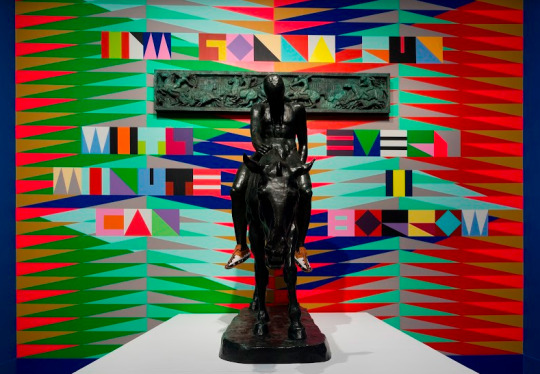
In the entrance gallery, set against a vibrant wall mural of his own design, Gibson highlights Charles Cary Rumsey’s bronze sculpture “ Dying Indian,” (circa1904) alongside other representations of Native Americans by non-Native artists.
The sculpture embodies a widely held view by Anglo-Americans in the early twentieth century that Native Americans were doomed to extinction as they were pushed ever west by settlers.

Gibson counters this view, asserting the continued vitality of Native American culture by adding a pair of commissioned beaded moccasins to the sculpture. Made by John Murie, they’re decorated with the phrase “I’m gonna run with every minute I can borrow,” which is also spelled out in the colorful wall mural behind the sculpture.
Taken from a song by Roberta Flack, the lyrics show how Gibson often includes language and references to pop culture into his work.

An arrangement of moccasins from the museum’s collection faces the sculpture, allowing us to imagine the absent bodies of the men, women, and children who once wore them.

In the adjacent gallery, also with wall murals designed by the artist, Gibson’s paintings on hide and on canvas with beadwork frames, sculptures, garments, and headpieces mingle with parfleche bags, beaded whimsies, and patchwork dresses by other Native artists.

Gibson often employs materials and techniques that have historically been used by Native American makers, including beadwork, jingles, and ribbons, which he sometimes combines with contemporary forms such as punching bags. One of his beaded punching bag sculptures hangs from the ceiling.

Geometric letters spell out “WHEN FIRE IS APPLIED TO A STONE IT CRACKS,” an Irish proverb Gibson chose as the title of the exhibition. The image of fire applied to stone suggests transformation, whether this pertains to Indigenous makers using new materials and techniques or institutions rethinking the power dynamic in writing of historical narratives.
This painting refers to many artistic traditions, including European oil painting on canvas, text-based conceptual art, psychedelia, and Native American beadwork.
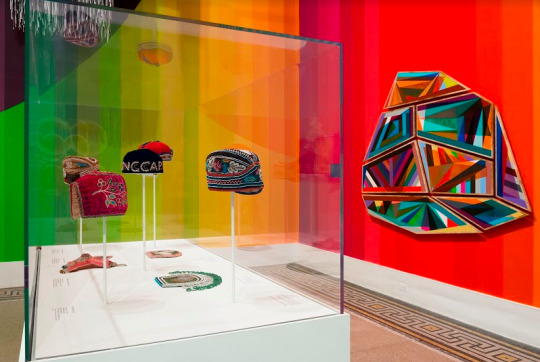
Gibson also paints on rawhide, a material used by Native Americans to make bags decorated with painted designs. This abstract work is composed of panels that fit together like a puzzle. Nearby are examples of beaded hats and bags from the collection. Many of these were made for the tourist market.

Nearby is a selection of painted parfleche bags drawn from the collection. Not so dissimilar from Gibson’s painted hide drums seen in the distance.

The third gallery largely focuses on photographs and material from the Museum’s Library Special Collections and Archives. Gibson worked with curatorial advisor Dr. Christian Crouch to select photos, paintings, and drawings from the papers of Stuart Culin, the curator who formed the collection of Native American Art at the Brooklyn Museum in the early 1900s.
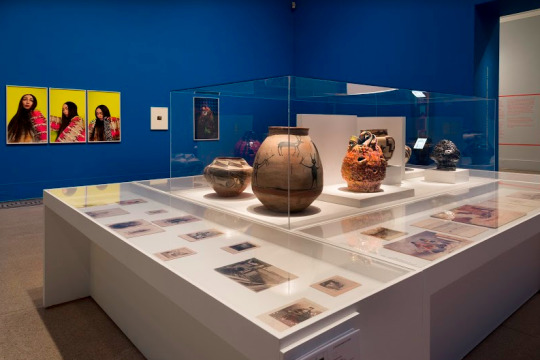
Gibson and Crouch decided to highlight images of Native men, women, and children, showing spontaneous representations of daily life as a form of resistance to the colonial gaze. Although they acknowledge Culin’s role in the foundations of the collection, the material on view centers Indigeneity, rejecting the exclusion and erasure of Indigenous histories that Museums have historically promoted.

Many of the European explorers who journeyed to what we today call North America, recorded their travels and published them upon their return to Europe. Many of the European explorers who journeyed to Engravers like Theodor de Bry were hired to illustrate these manuscripts based on second hand accounts.
Since he could only imagine what they had seen, de Bry’s depictions were skewed to fit the Western world, creating some of the first inaccurate depictions of Indigenous Peoples--the reverberations of which are still felt today.
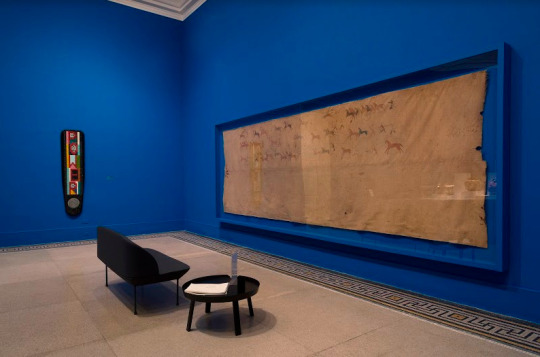
This tipi liner by Húŋkpapȟa Lakota leader Rain-In-The-Face is a visual representation of his life’s deeds. Made by his own hand, it is a first person account as well as a self portrait and a self representation in contrast to the photographic portraits of Native American people from the same period in this gallery.
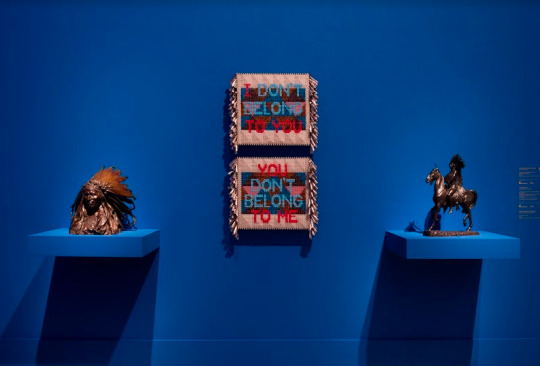
Visually striking and intellectually provocative,”When Fire Is Applied to a Stone It Cracks” is an original and innovative project: inviting a more expansive narrative that includes and integrates the histories of Indigenous people and challenging visitors to reconsider their assumptions of what Native American art can be.
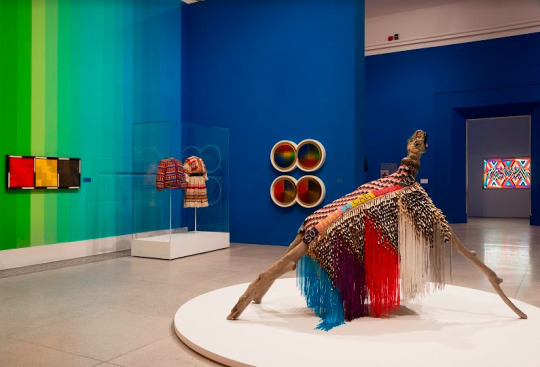
Shout out to Nancy Rosoff, Andrew W. Mellon Senior Curator, Molly Seegers, Museum Archivist, Margarita Karasoulis, Assistant Curator of American Art, and Drew Sawyer, Phillip Leonian and Edith Rosenbaum Leonian Curator of Photography for their incredible work on this exhibition as well.
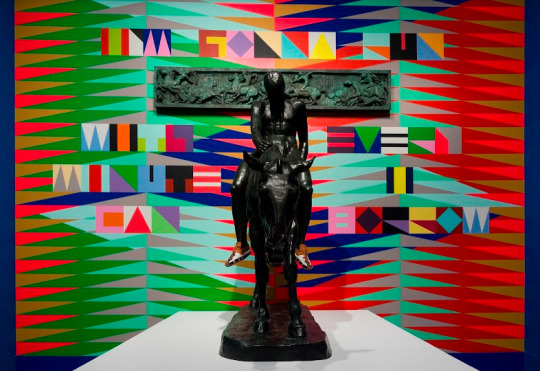
Thank you for joining us on our tour of Jeffrey Gibson: When Fire Is Applied to a Stone It Cracks Join next Sunday for another virtual tour of our galleries!
Installation view of Jeffrey Gibson: When Fire Is Applied to a Stone It Cracks, February 14, 2020–January 10, 2021. (Photo: Jonathon Dorado)
(Source: brooklynmuseum.org)
#virtualtour#virtual tours#virtual programming#brooklyn#brooklyn museum#art#artmuseum#bkmtours#jeffrey gibson#gibson#native american
310 notes
·
View notes
Text
No Filter
On Notes on an Appearance
1.
In an essay on L’enfance-nue, Kent Jones claims that Maurice Pialat’s debut should be counted among the greatest debuts in cinema, and the fact that it is not is “indicative of nothing more than the overvaluation of progress. Which as Philippe Garrel, another underappreciated French filmmaker, once noted, has no place in the arts.” With Ricky D’Ambrose’s Notes on an Appearance, it is clear that progress is not on the agenda. The film is akin to the pitch sessions in The Player, albeit for a different social circle: “Get this…it’s Antonioni plus Bresson!” Yet, while aiming for these apparently lofty goals, it is closer to Woody Allen desiring the veneer of Serious Art by cosplaying Ingmar Bergman in his Interiors. Notes on an Appearance is Interiors for today’s New York critical establishment.


In his Notes Towards the Devaluation of Woody Allen, Jonathan Rosenbaum writes, “beyond a certain point there’s a question of whether this kind of emulation is being used as a tool for fresh discoveries or as an expedient substitute for such discoveries - a shield labeled ‘Art’ that’s intended to intimidate nonbelievers.” Movies tend to straddle the line between what is seen to be art or non-art, as Alain Badiou once stated (he has been published by Verso) and one of the powers of movies is precisely to redraw the lines between art and non-art. In his Instagram and the Fantasy of Mastery, included in the Berlinale press kit for his film, D’Ambrose sets up a dualism between Style vs Looks. It’s a dualism because, as Ray Brassier would say, it fails to explain the connection between the terms it distinguishes. A look is “easily seen without being sought out”, and examples include Instagram presets, some use of 16mm film, and it is aimed at “gratifying an existing idea of what a ‘70s movie or a ‘60s canvas or an ‘80s photograph is like.” Meanwhile, a style is “an involuntary guiding plan, or the transmission of an ineffable personal vision or sensibility into form.” Style for D’Ambrose, tells us “everything not about the world, but about the work”, and each artwork demands its own standards of judgment. He writes, “Who would demand that Charlie Chaplin’s Modern Times and Alain Resnais’ Le chant du Styrène should add up to a single, unanimous statement about factory work?” I don’t think anyone is claiming it should add up to a single statement, but, it is possible that it can add up to many. The contemporary distaste for quantification of any kind points to a lack of imagination regarding number and quantity as such. Artists today are so quick to abandon “the quantified self” in search for some sort of ineffability. To point to just one example: Erika Balsom writes on Laida Lertxundi and how her work shows how “life might be at once measured and unmeasurable”, and is “fascinated by structure while casting doubt upon its ability to capture the flux of life.“ What goes unsaid is the assumption that, as Dominic Fox puts it, “reality is fundamentally continuous, and discretization is an operation of ‘power’ [...] it takes individuation as always and everywhere the forcible division of that which is naturally collective and coherent.” The automation of looks, it would seem, erases a possibility of style, a style that is ineffable. But, to quote Mallarmé, “Over there, wherever it is, denying the ineffable, which lies.” Does the notion of a filter, of that which automatically creates a “look”, really create a site of danger for art? Who really uses these filters? People on vacation using a GoPro? Free time with your lover and adding a Huji filter at a concert? The Art Hoe Collective using filters on their selfies beside the “great works of art”? Or, if looks are not reducible to the image, what about trap drum kits, or any other presets available to any artist wanting to create a beat? What is really at stake is D’Ambrose’s distaste for any artistic labour that can be automated, because artists aren’t workers, but beings in search for the ineffable or any religious substitute. (Comically, at 20 000 USD this is an oxymoronic film, a ‘no-budget bourgeois picture’, because of course, 20 000 USD is nothing). But look at the clippings he designed, imitative of all sorts of New York magazines and journals - there is nothing in here that cannot be automated. One can easily imagine an app that can take any text and image and with some presets make it look like it was published by The New Yorker. But, since D’Ambrose himself worked on the documents presented, it is apparently not a look but an ineffable style. What is the actual experience of taking a photo and running the different filters through it? One can imagine taking a photo, and trying each filter, and even adjusting saturation, brightness, and contrast, or what have you. One may have even gotten lost in the passage through different settings, colours, and sliders. And then what does one do? One resets the image. And now the image appears to be already filtered - it lost its unfiltered quality. Many a time I would look at my initial image and find it almost unrecognizable. Was it really that drab? And yet on a second approach, what is revealed is the contingency of the technological look, that even the unaided image is already mediated. Or take it further, with FaceTune apps, where facial features can be changed in frame. When D’Ambrose says composition disappears, has he never seen a selfie? Or even the claim that the frame itself disappears: it appears most forcefully in the very movement between the different filters on an app, much like how the idea of the frame itself appears only at the juncture of the cinematic cut. At the very least, these apps and different tools can be part of a young person becoming an artist, learning about the different tools to use. Even more, the movement through filters allows the subject to see their very appearance as contingent, and not essential. What’s truly tiresome is the trend in arts writing that maintains a pejorative connotation on what can be engineered, anything that has to do with automation, data processing, and the like. It paints a monolithic portrait of the potentials and trajectories of technology. To put it like Jia Zhangke: “I feel that somehow we’ve overlooked many of the principles discovered by great masters like Eisenstein or even Leonardo da Vinci. This is because we can no longer be like people of those eras, who were versed in all branches of learning, who were immersed in science while undertaking a kind of religious quest for new forms. This inability has damaged the quality of our cinema.” This damaged quality can be reformed I think with a new confrontation with quantity, rather than a repetition of what came before. D’Ambrose closes his essay calling for “a new view” - but is it the case that the technology of automated looks may not have a relation to this new view? That it can be repurposed? He writes derisively on looks that “Canon or Apple can engineer”, and that rather than art born of an artist’s appetite, all we have left is the “mastering of the manufacturer’s rules”. Yet one can recall the rules of linear perspective in De Pictura as written by Leon Battista Alberti - there is nothing a priori unfree or unthinking about rule following. In fact, a renewed relation between rationality, vision, science, and engineering, being “versed in all branches of learning��� may do better to produce a new view rather than a mere continuation of the European canon, yet again. D’Ambrose emphasizes a distance between himself and the characters in his movie, claiming he does not see them as intellectuals. But I find it difficult to take this assertion as true - any sort of critique of its milieu is canceled by his Instagram article. Published in The Nation and not The Onion, it is difficult to say the piece was written satirically, or in the voice of Todd or Karin. Thus we must take it at face value, a piece whose emptiness matches what is depicted on screen. The film features a fictional philosopher named Stephen Taubes, presented as a sort of combination of Paul de Man and Heidegger, complete with “Basic Writings” and “Late Notebooks”. He is presented as anti-Semitic, and an instigator of violence. But why use a photo of Jacques Rancière to represent Taubes? Rancière, a leftist philosopher of equality who sees art as a possible place of politics, where, as said in a supposedly parodic panel discussion, the sensible can be redistributed through art. Why is his image used to represent a “dangerous philosopher”, who appears like he’s a fascist like Heidegger, and then is published by the leftist publisher Verso? Why show the company publishing violent right wing texts with book jackets designed by D’Ambrose? It’s a typical attitude of an intellectual whose centrism conflates left and right extremes, one who finds solace in art against extremism as such, the beautiful soul who cannot see their own hand in the world. One can think it’s a harmless in-joke, that the Verso images are jokes as well, but one can speculate that Rancière’s desire for equality through art would irritate an author who critiques the automated looks available to anyone with a cellphone. It’s the sort of centrism that leads a cinephile to watch Straub-Huillet one week and vote for HRC another out of a sense of political realism. Must there be a unification of one’s artistic preferences and political beliefs? Probably not, but the fact that such techniques are so detachable makes it comparable to any filter or look. In the same way that Kent Jones always defends an artificial scarcity of narrative art against some fantasmatic onslaught of an avant-garde that never comes, D’Ambrose’s critique of looks rings hollow, a claim against technologies that automates artistic labour so one can shoot in Academy ratio and look Bressonian. Rosenbaum claims that it is impossible to simply apply a style like a coat of paint, but what is it about human beings working with technological tools that would bar this from happening? Finally, the author also writes that the creative today is typically “thoroughly urbanized, mainly white, typically heterosexual and male”, as if there are no creatives of colour, on Instagram, who model themselves based on an artist like Kanye West, who also calls himself a creative. Because for artists inspired by his work, what is it to be creative? It merely means that one can take part in music, fashion, architecture, technology, or whatever it is you please - that you can be a polyvalent human being involved in all sorts of practices and do not have to limit oneself to the most narrow fields of expertise. While the term creative is critiqued again and again, what is so clearly at stake for any youth who gravitates to the term is the idea of imagination itself, that there is more than that which merely appears, and this more is not a religious ineffable beyond, but something that can be reached through the discipline of reason, invention, technology, and recipes. When taste becomes a defining factor in making art, no one will attempt to make new recipes, for it will not fit the closed off tastebuds that we parade about as markers of supposed cultural superiority.
2.
“It concerns a search for a character who disappears, and the character disappears in a city in which there’s a group of young people, the Verso Books crowd, enchanted by this ideologue who’s coming to give a lecture. I do not want to make a political, sociological movie with a ‘statement’ about a “generation.”
- Ricky D’Ambrose in an interview with Steve Macfarlane
“The antithesis of criticism isn’t praise but cultural criticism, or, Art-Ed that turns works into sociogrist.”
- Richard Brody Of course, when a white filmmaker makes a film such as this, he can evade the realm of the sociological and the political, and instead be “philosophical”, extending a dialogue between images and sounds as such, or what have you. No critic would ever open a review on this movie with gentrification statistics. No, no, it’s more than that! We should not raise eyebrows at D’Ambrose having Verso publishing a right-wing author, it’s all parody - it’s not that D’Ambrose is a typical centrist conflating left and right, it’s that he’s a serious artist thinking about images, labels, looks, and the power, or lack of power, of contemporary art! It’s remarkable that, like a big blockbuster movie, any statement against this film can be reversed as some sort of faux self-critique. But here it’s not shallowness or opportunism, but the vanguard of New York filmmaking. In a Q&A session regarding his film, D’Ambrose claims that the lack of cellphones or computers or reference to technology “wasn’t a choice [...] it wasn’t something I was thinking about [...] it wasn’t a decision.” That is to say, the lack of technology in the film is “unintentional, like the weather,” just like art and taste in the apparent era of looks. For all the alarmist attitudes towards supposed dangerous authors, D’Ambrose’s avoidance and distance from technology is as retrograde as any of the worst clichés of Heidegger in his hut. And then in a recent screening in Toronto, he claimed he only chose Rancière for his look, and the fact the picture was in the public domain. Yes, with all the careful work making mock Verso covers, and the Rancière reference in the conference scene, from a screenplay written 10 years ago, the picture was just what looked good and happened to be in the public domain. Either he thinks his audience is stupid (he introduced the film as “an exercise in reading comprehension”), or he is playing dumb, but either way it’s typical of a white artist to act, or be, unknowing during a Q&A, and openly contradict their entire intellectual project, a project in this case that is against the unthinking decisions of what is most immediately available. The cast itself is populated by critics and curators, friends of the filmmaker. Nick Pinkerton writes that he felt he was perhaps the only person qualified to write on the film because he was the only New York critic not in the movie. Seeing the film immediately brought to mind Fanta Sylla’s coinage, that today we have “networking as criticism”. The looks will be critiqued, but not the network itself. In fact, even pitching to publications to critique the film was rejected as he either already wrote for the publication, or, as it was his first feature, it was decided that it would be uncouth to critique it with any harshness. One would think that if anyone can be critiqued, it would be a critic, but in fact the game of giving and asking for reasons is not to be played - reason is not a strong point of criticism today, but instead there are only ineffable suggestions that cannot be quantified, complicated experiences that continually repeat a skepticism in the possibility of knowing anything at all, a fake modesty that keeps everything in place. In 2017, Michel Hazanavicius made a film covering the ‘68 era of Jean-Luc Godard and Anne Wiazemsky’s life. Not a good movie by any stretch of the imagination, but what I found interesting was the way the movie unconsciously depicted Godard’s struggle as an artist: the film is full of the “Godard” look of the early 60s films, but it is clear that the political moment covered could not be thought via that look. There is a necessity to go towards the Dziga Vertov Group period. To go on filming like it was ‘63 is nonsensical and doesn’t capture the historical realities of even 5 years later. And thus when you look at a film from 1972 that is 60 minutes long, intellectually exhilarating, and filmed mostly in one apartment, called Struggles in Italy, it is clear how much has changed. Created by the Dziga Vertov Group, it is a passionate and rigorous illustration of the ideas of Louis Althusser. To be blunt, I remember Filmmaker Magazine editor and New York-based film critic Vadim Rizov writing that all the characters in my film 88:88 are reading the same book, Badiou’s translation of Plato’s Republic. Yet, this was simply, empirically false: there were all sorts of different books in the film, and, despite most commentaries, not even exclusively of the continental persuasion. There is a tendency to assume that any intellectual seriousness towards books of philosophers, especially of politics, must be kept at a distance, or at a mocking tone, or, rather believe they are all one book. The presence of books outside of a grad school setting can only be some sort of fetish or showing off, as claimed by many critics who still feel the need to put out a yearly blog post of all the novels they read that year. Notes satisfies this tendency, as it can be at once an “intellectual film”, a “critique of the milieu of these intellectuals”, and a presentation of fictional students taking philosophy almost “too seriously” - much like the Woody Allen films that Rosenbaum has critiqued, whereby one can take part in feeling like an intellectual while still maintaining the air of being above intellectual matters themselves. This is a typical American tendency that sees intellectual maturity as that of sustained skepticism, yet is never able to become skeptical of skepticism itself. Skepticism as a shield, like “Art”, never a motor of discovery. In the gap between works like Struggles in Italy and Notes on an Appearance, one can sense a backwards movement, a relation of art and politics that is at the very least, pre-’68. That is to say, as if there were no crises of forms, we can simply return to the canon, and continue with ones favourite artistic filters. In his review of Notes, Richard Brody writes that in fact D’Ambrose’s intellectualism is a “comedic mask”, and his true subject is “the mysteries that elude dialectics and disputations” that is, the true subject, again, is something ineffable. However, despite all its ellipses, its so called ‘incompleteness’, the movie is absolutely clear. Phil Coldiron writes, “[h]is position is that, given the world, it is the tendency of those who see themselves as the leading edge of culture today to do nothing other than squander it.” I would agree but only add that both Instagram and Notes are further proof of this squandering.


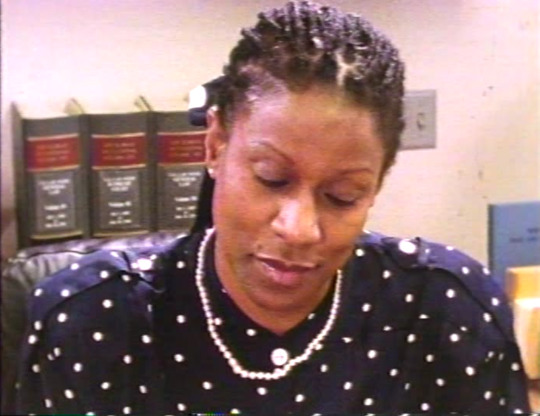
The DVD of Liability Crisis, Richard Brody’s first feature, a film which bears more than a passing resemblance to the look of Notes, contains an ‘original version’ of his film, a 57 minute cut. In the original version there is a bizarre scene that unfolds as such: Paul asks a black co-worker, “What do you do?” She talks about how she is a filmmaker, and when taking a filmmaker course in college, her fellow white students would ask “How did you come up with this, how did you put one image next to the other?” To which she replies: “I couldn’t say how, it wasn’t a rational process, I didn’t think about why I should do it, I just did it, I just did what felt right. They weren’t satisfied with that, the teacher wasn’t satisfied with that. That’s the difference between black people and white people. White people do things in an orderly, logical, rational manner. They think things out step by step, they… just 1 2 3 4. But black people, black people go with what feels right. They go with it. They go with the flow.” Today I think it is an imperative to reclaim rationality against this tired image of reason itself being white, since even the pseudo-emancipatory idea that people of colour are beyond reason is itself its own colonialist fantasy. The resurrection of reason should be decoupled by that other tired myth from the 20th century, that reason itself is totalitarian, when in fact it teaches that all claims are potentially revisable, and that we are responsible for what we think and do. Film theory can become a tool that is part of, and theorizes, the possibility of new workflows, new recipes, since criticism today is just networking plus an academic index of styles deemed worthy of repeating. This desire for a style over a look is just a redundant call for an American individualism fearful of getting lost in a world in which they are technologically illiterate. The reduction of all looks and automation to either neoliberal economics or art subtracted from any idea of tradition shows an inability to repurpose or rethink the given, and thus all that is left is to leap back to a given tradition. One should strive to be a little more creative than that. It’s a bad look.
133 notes
·
View notes
Text
Outlast 2 - Launch Trailer | PS4
Outlast 2 – Launch Trailer | PS4
Outlast 2 is the sequel to the acclaimed survival horror game Outlast. Set in the same universe as the first game, but with different characters and a different setting, Outlast 2 is a twisted new journey into the depths of the human mind and its dark secrets.
Director: Simon Peacock Writer: J.T. Petty (as JT Petty) Stars: Erika Rosenbaum, Noah Nethercott, Shawn Baichoo
Rated Mature: Intense…
View On WordPress
0 notes
Text
2018 New Member Receptions

(L-R) Robert De Niro, Kal Penn and Cuba Gooding Jr.
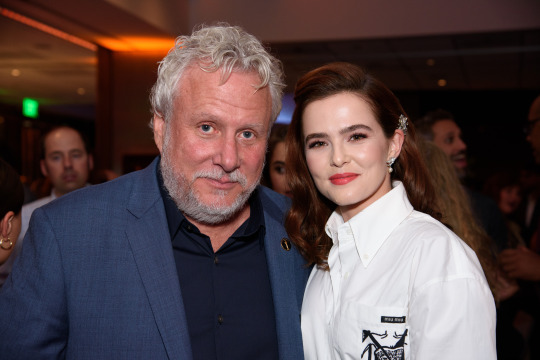
Academy Governor Larry Karaszewski and Zoey Deutch
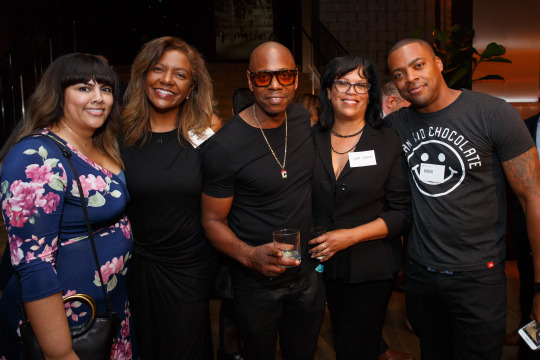
(L-R) Melissa Martinez, Bettina Sherick, Dave Chappelle, Laura Brown and Radio

Del Spiva and Academy Governor Teri Dorman
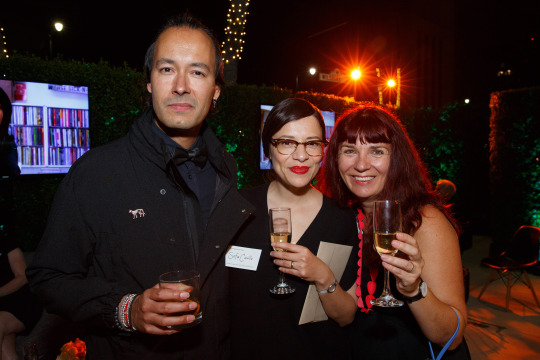
(L-R) Yolihuani Curiel, Sofia Carrillo and Melanie Coombs

Wayne Knight

(L-R) Rob Simonsen and guest, Academy Governor Laura Karpman, Academy Governor Charles Bernstein and Nora Kroll-Rosenbaum

(L-R) Daniel Lindsay, Erin Lindsay, TJ Martin and Erika Buder

Los Angeles New Member Reception

Bay Area New Member Reception

Academy President John Bailey and CEO Dawn Hudson
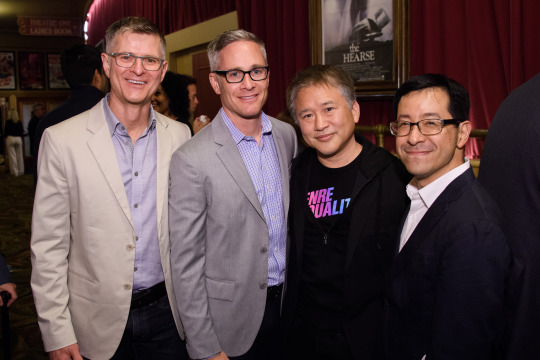
(L-R) Michael Miller, Michael Agulnek, Marcus Hu and Ross Nakasone

(L-R) Agnes Ann Guerard Rodgers, Connie Field, Julie Parker Benello, Academy Governor Sid Ganis and Boots Riley

Academy CEO Dawn Hudson and Carey Mulligan

New York New Member Reception
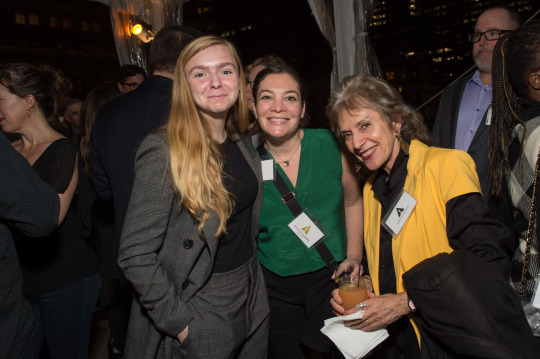
(L-R) Elsie Fisher, Nicolette Aizenberg and Annette Insdorf

New York New Member Reception

Olivia Sammons and Maggie Gyllenhaal

(L-R) Paul Dano, Carey Mulligan, Zoe Kazan, Academy Governor Whoopi Goldberg and Academy Director of New York Programs and Member Relations Patrick Harrison
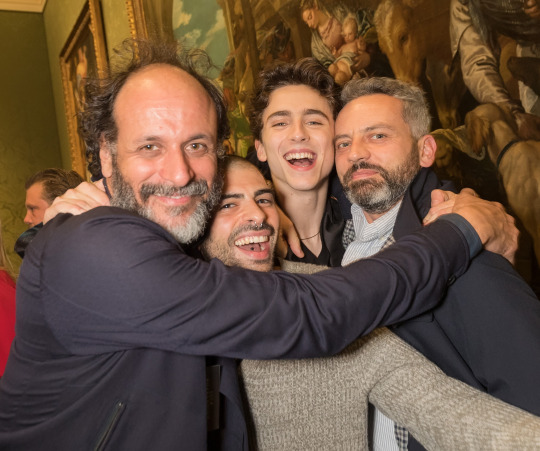
(L-R) Luca Guadagnino, Giuppy d'Aura, Timothée Chalamet and Alessio Bolzoni

(L-R) Ellen Dumouchel, Mahershala Ali and Trevor Kennish
204 notes
·
View notes
Text
Navigation
Multimedia
Gifs
Text Posts
Photos
Screen Captures
Episode Parallels
Videos
Reblogs
PAIRINGS
Jack & Elizabeth
Leland & Rosemary Coulter
Jesse & Clara
Rev. Frank Hogan & Abigail Stanton
Leading Characters / Cast
Elizabeth Thatcher (Thornton) / Erika Krakow
Jack Thornton / Daniel Lissing
Abigail Stanton / Lori Loughlin
Rev. Frank Hogan / Mark Humphrey
Rosemary Coulter / Pascale Hutton
Leland Coulter / Kavan Smith
Henry Gowan / Martin Cummins
Bill Avery / Jack Wagner
Carson Shepherd / Paul Greene
Faith Carter / Andrea Brooks
SUPPORTING Characters / Cast (Past & Present)
Under Construction
Florence Blakely / Loretta Walsh
Dottie Ramsey/ Erica Carroll
Mollie Sullivan / Johannah Newmarch
Jesse Flynn / Aren Buchholz
Clara Stanton / Eva Bourne
Mike Hickam / Ben Rosenbaum
Ned Yost / Hrothgar Mathews
Katie Yost / Larissa Albuquerque
William Thatcher / Garwin Sanford
Julie Thatcher / Charlotte Hegele
Viola Thatcher / Devon Weigel
Tom Thornton / Max Lloyd-Jones
Cat Montgomery / Chela Horsdal
Charles Kensington / Marcus Rosner
Mr. Jenkins / Milo Shandel
CHILDREN:
There are a lot of children on this show. I think I covered most (if not all) of the main children cast, but if there is someone not listed and you think should be listed, please message me and let me know.
Emily Montgomery / Gracyn Shinyei
Miles Montgomery / Logan Williams
Gabe Montgomery / Mitchell Kummen
Cody Stanton / Carter Ryan Evancic
Becky Stanton / Ali Skovbye
Anna Hayford / Kandence Kendall Roach
Opal Weiss / Ava Grace Cooper
Robert Wolf / Jaiven Natt
Timmy Lawson / Christian Michael Cooper
Philip Cantrell / Liam Hughes
Laura Campbell / Genea Charpentier
Hattie Ferguson / Imogen Tear
Harper Tucker / Callum Seagram Airlie
Ruby Benson / Hannah Zirke
Albert Bickley / Sean Michael Kerr
Maggie Lawson / Amelie Eve
Rosaleen Sullivan / Mamie Laverock
Gifs by Episode
Season 1
1x01 Lost & Found
1x02 Cease and Desist
1x03 A Telling Silence
1x04 Secrets & Lies
1x05 The Dance
1x06 These Games
1x07 Second Chances
1x08 Perils of the Soloist
1x09 Change of Heart
1x10 Love Comes First
1x11 Rules of Engagement
1x12 Prelude to a Kiss
Season 2
2x01 Trials of the Heart
2x02 Heart and Soul
2x03 Heart’s Desire
2x04 Awakenings & Revelations
2x05 Heart and Home
2x06 Coming Together, Coming Apart
2x07 With All My Heart
Season 3
3x01 New Year’s Wish
3x02 Troubled Hearts
3x03 A Time to Speak
3x04 Heart of a Hero
3x05 A Gentle Heart
3x06 Forever in My Heart
3x07 Heartbreak
3x08 Hearts in Question
3x09 Prayers from the Heart
Season 4
4x01 When Calls the Heart Christmas
4x02 Words from the Heart
4x03 Heart of Truth
4x04 The Heart of the Community
4x05 Change of Heart
4x06 Heart of a Teacher
4x07 My Heart Will Go On
4x08 Healing Heart
4x09 Courageous Heart
4x10 Heart of a Secret
4x11 Heart of a Fighter
Season 5 (current season)
5x00 The Christmas Wishing Tree
5x01 Believing
5x02 Hearts & Minds
5x03 Home is Where the Heart is
5x04 Open Hearts
5x05 My Heart is Yours
5x06 Love & Marriage
5x07 Heart of the Matter
5x08 Weather the Storm
5x09 In My Dreams
5x10 Close to My Heart
This navigation page will be an ongoing project as material is created.
6 notes
·
View notes
Photo

Actress Shares Her Harrowing Account of Harvey Weinstein’s Manipulation
We’ve read about most of the sexual assault and harassment allegations against Harvey Weinstein through reports and essays, but now the New York Times has released an audio interview with Canadian actress Erika Rosenbaum about her encounters with the Hollywood producer.
10 notes
·
View notes
Text
#MeToo 'is bigger than one man': How the Harvey Weinstein trial impacts the movement | CBC News
#MeToo ‘is bigger than one man’: How the Harvey Weinstein trial impacts the movement | CBC News

This story is part of #MeToo 2020, a CBC News series examining what’s changed since the start of the #MeToo movement two years ago and how the trial of disgraced Hollywood mogul Harvey Weinstein will affect the future of the movement.
For Montreal actress Erika Rosenbaum, who is among the dozens of women who have accused Harvey Weinstein of sexual misconduct and abuse, his trial is an important…
View On WordPress
0 notes
Photo

ERIKA ROSENBAUM ( Film Subject of the Film “ UNTOUCHABLE “ , Attended The Post- Screening Conversation At the 51/FEST Film Festival in NYC ..! https://www.instagram.com/p/B0PwPAxhLTo/?igshid=498rhc10b0e2
0 notes
Text

Hulu announces premiere date, releases trailer for Harvey Weinstein documentary “Untouchable”
Nearly two years after a couple of Harvey Weinstein exposés helped kick off the #MeToo movement, the Weinstein Company co-founder has remained in the headlines as reported settlement negotiations with his accusers continue and accusers step forward with claims against other alleged sexual predators.
On Wednesday, amid news of the latest man felled in part by the #MeToo movement, Jeffrey Epstein, Hulu released the trailer and announced the premiere date for “Untouchable,” the Ursula Macfarlane-directed documentary about the precipitous fall of Weinstein, the once-powerful movie producer.
The trailer includes accusers Rosanna Arquette, Hope Exiner d’Amore, Paz de la Huerta, Zelda Perkins, Erika Rosenbaum, Caitlin Dulany, Louise Godbold, and Nannette Klatt.
While comprising just a fraction of Weinstein’s 91 accusers, they offer a look at the effect that Weinstein’s alleged conduct has wrought.
“Untouchable” premeires September 2 on Hulu.
Watch the trailer and read the story at The Hollywood Reporter.
0 notes